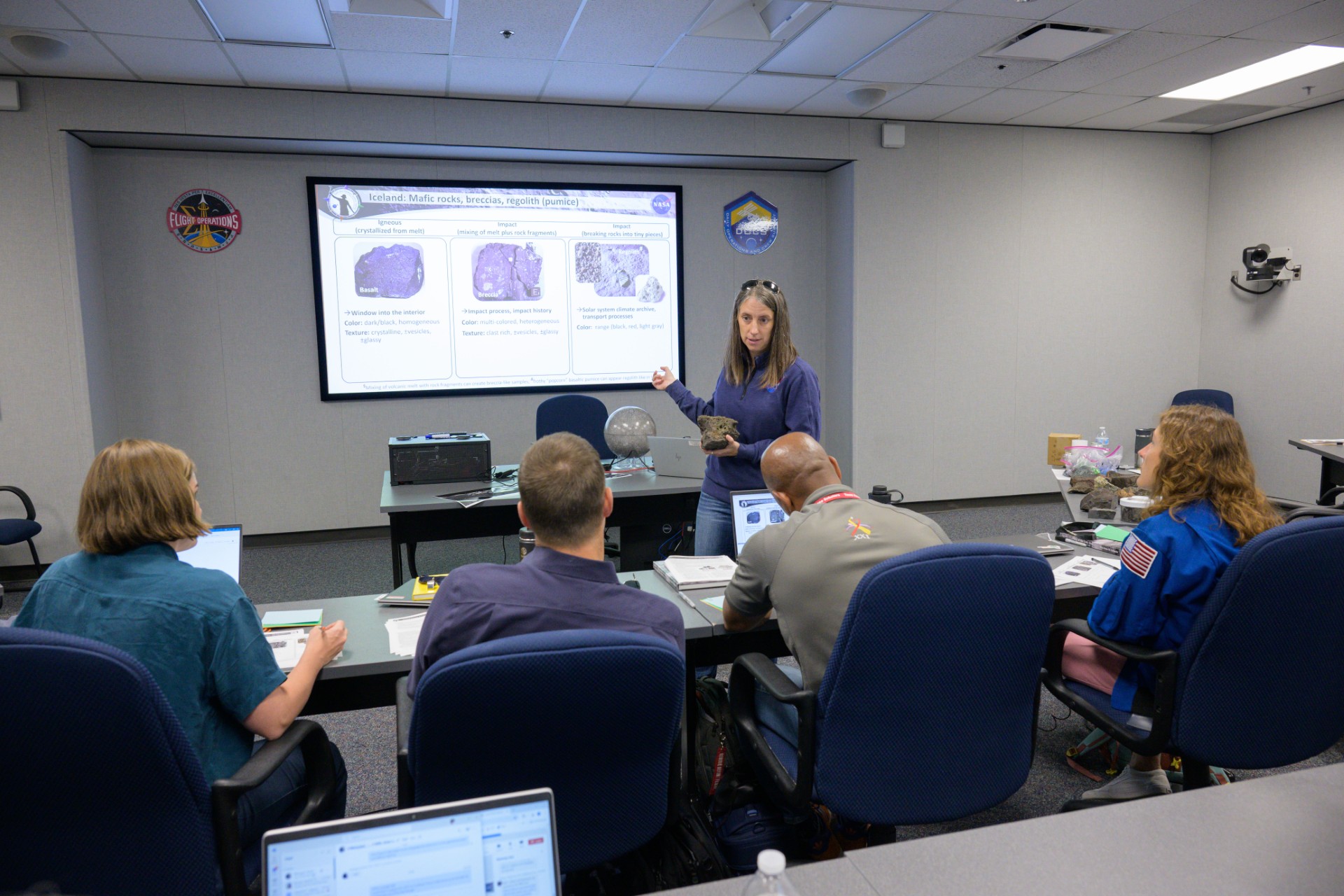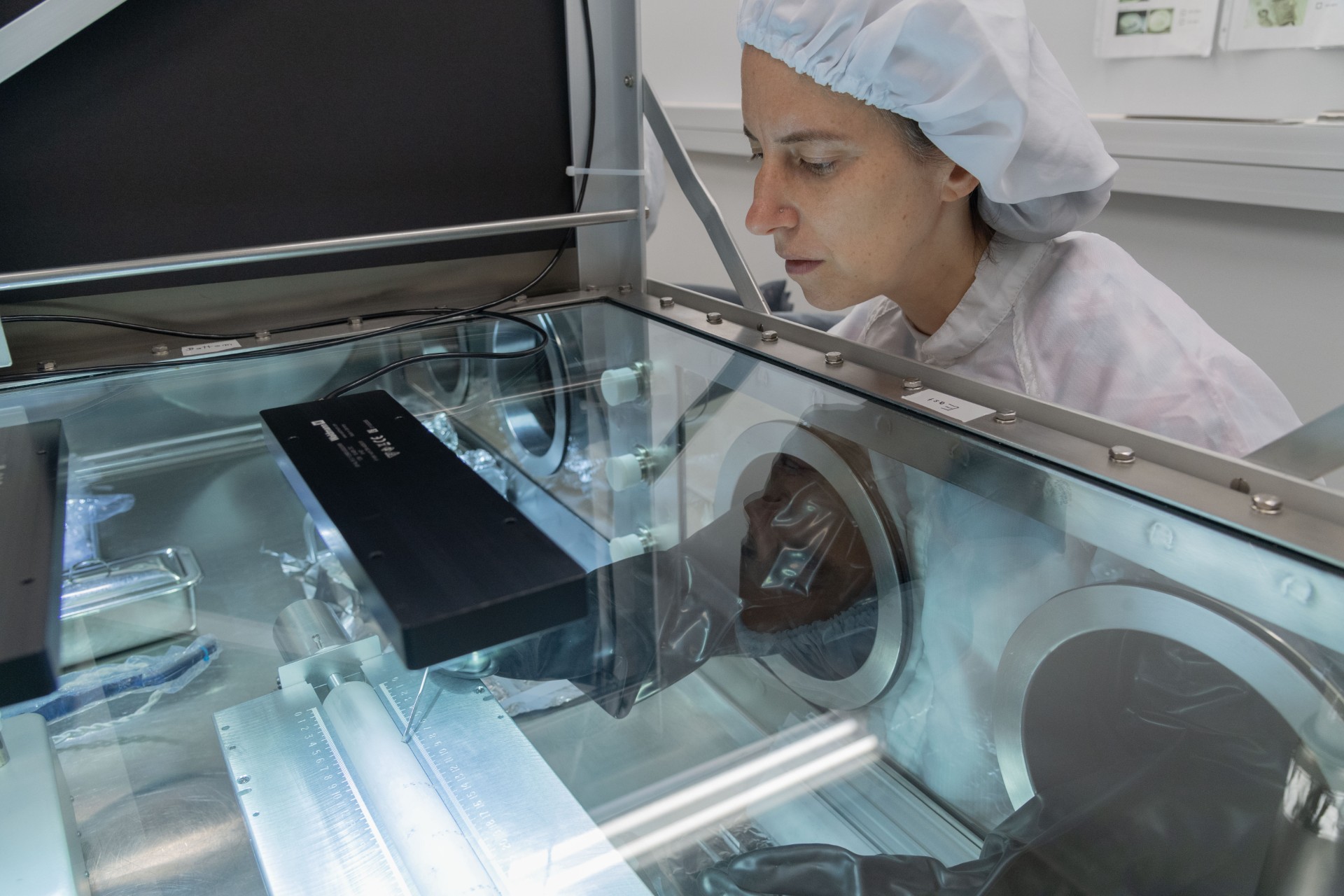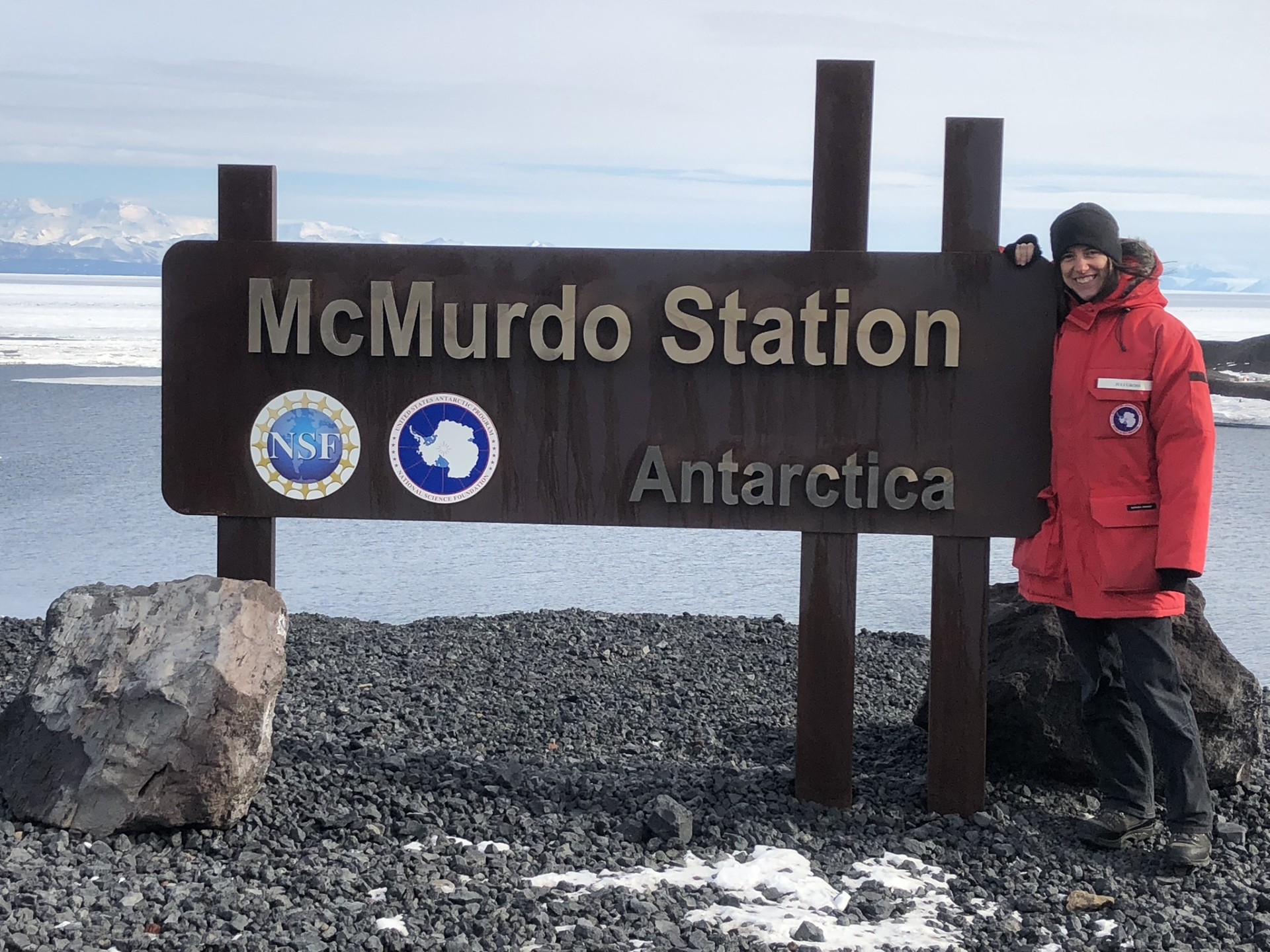Based at NASA's Johnson Space Center in Houston, the Astromaterials Research and Exploration Science Division, or ARES, curates the most extensive collection of extraterrestrial materials on Earth, ranging from microscopic cosmic dust particles to Apollo-era Moon rocks. Soon, ARES' team of world-leading sample scientists hopes to add something new to its collection - lunar samples from the Moon's South Pole region.
As the Artemis campaign sample curation lead, Dr. Juliane Gross is helping ARES and NASA prepare to collect and return those samples safely. "I'm responsible for representing the voice of the Moon rocks and advocating for their protection, preservation, and maintaining their integrity during the planning and execution of all stages of the different Artemis sample return missions," she said.

Her multifaceted role includes preparing the Johnson facility that will receive new lunar samples, developing curation strategies, and collaborating with mission teams to plan sampling operations, which encompass collection, handling, transport, and storage processes for all stages of Artemis missions. She trains program managers and engineers on the importance of sample return and teaches crew members how to identify lunar samples and collect them without contamination. She also works with the different programs and teams that oversee the vehicles used at different stages of lunar missions - collaborating with the human landing system team around tool storage and delivery to the lunar surface, the Orion Program to coordinate sample stowage for the return to Earth, and Exploration Ground Systems to plan sample recovery after splashdown.
Once samples are returned to Earth, Gross and the ARES curation team will conduct a preliminary examination of the materials and release a sample catalog from which members of the global scientific community may request loans to carry out their respective research.
Working across Artemis teams raised an unexpected but fun challenge for Gross - learning to communicate effectively with colleagues who have different academic and professional backgrounds. "Scientists like me speak a different language than engineers, and we all speak a different language than managers or the general public," she said. "I have worked hard to find common vocabulary and to 'translate' science needs into the different types of languages that exist within the Artemis campaign. I'm trying to use our differences as strengths to enable mission success and to connect and build relationships with all these different teams through my love and passion for the Moon and rocks from the Moon."
That passion emerged shortly after Gross completed her Ph.D. in geology, while working on lunar samples with the Lunar and Planetary Institute. She went on to become a research scientist with the American Museum of Natural History in New York, and then a tenured professor of planetary sciences at Rutgers University in Piscataway, New Jersey.
In 2019, NASA asked Gross to join the Apollo Next Generation Sample Analysis Program. Under the program, NASA preserved some of the 382 kilograms of lunar samples returned by Apollo missions, keeping them sealed for future generations to open and analyze. "NASA had the foresight to understand that technology would evolve and our level of sophistication for handling and examining samples would greatly increase," Gross said.
She and two other scientists had the incredible opportunity to open and examine two samples returned by Apollo 17. Their work served as a practice run for Artemis sample returns while building upon the fundamental insights into the shared origin and history of Earth and the Moon that scientists previously derived from other Apollo samples. For example, the team extracted gas from one sample that will provide information about the volatiles that future lunar missions may encounter around the Moon's South Pole.
"The Apollo Next Generation Sample Analysis Program linked the first generation of lunar explorers from Apollo with future explorers of the Moon with Artemis," Gross said. "I'm very proud to have played such an important role in this initiative that now feeds forward to Artemis."

Gross' connection with NASA began even earlier in her career. She was selected to join the agency-sponsored Antarctic Search for Meteorites team and lived in the deep ice fields of Antarctica for two months with seven other people. "We lived in tiny two-person tents without any support and recovered a total of 263 space rocks under challenging conditions," she said. "I experienced the powerful forces of Antarctica and traveled 332 miles on skidoos. My body changed in the cold - I stuffed my face with enough butter, chocolate, and peanut M&Ms to last a lifetime and yet I lost weight."
This formative experience taught Gross to find and celebrate beauty, even in her toughest moments. "I drank tea made with Antarctic glacier ice that is thousands to millions of years old. I will never forget the beautiful bell-like sounds that snow crystals make when being blown across the ice, the rainbow-sparkling ice crystals on a really cold day, the vast expanses of ice sheets looking like oceans frozen in eternity, and the icy bite of the wind on any unprotected skin that made me feel so alive and reminded me how vulnerable and precious life is," she said. "And I will never ever forget the thrill and utter joy of finding a meteorite that you know no one on this planet has ever seen before you."
Gross ultimately received the Antarctica Service Medal of the United States Armed Forces from the U.S. Department of Defense for her work.

Transitioning from full-time academia to her current position at NASA has been a big adjustment for Gross, but she has learned to love the change and the growth opportunities that come with it. "Being part of this incredible moment in history when we are about to return to the Moon with Artemis, our Apollo of today, feels so special and humbling that it made the transition easier," she said.
The job has also increased Gross' love and excitement for space exploration and reminds her every day why sample return missions are important. "The Moon is a museum of planetary history," she said. "It has recorded and preserved the changes that affected the Earth-Moon system and is the best and most accessible place in the solar system to study planet-altering processes that have affected our corner of the universe."
Still, "The Moon is only our next frontier," she said. "Keep looking up and never give up. Ad astra!"
Watch below to learn about NASA's rich history of geology training and hear how scientists and engineers are getting ready to bring back samples that will help us learn about the origins of our solar system.






